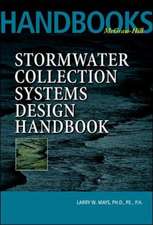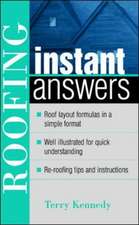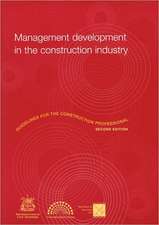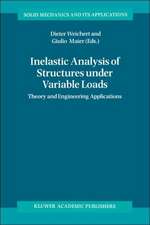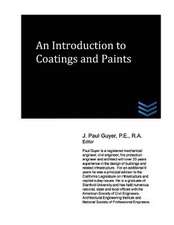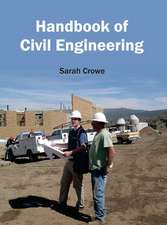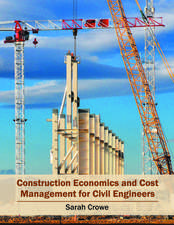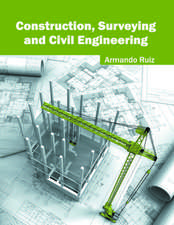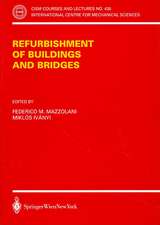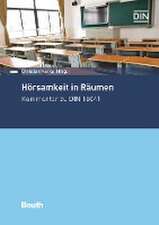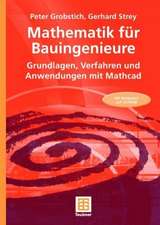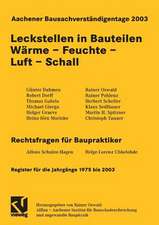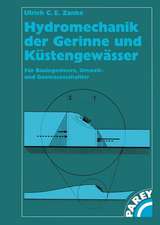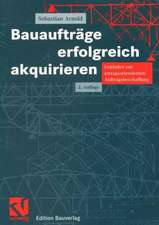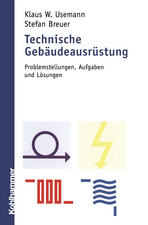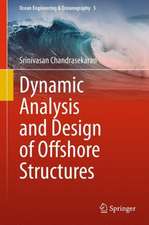Seismic Design Aids for Nonlinear Analysis of Reinforced Concrete Structures
Autor Srinivasan Chandrasekaran, Luciano Nunziante, Giorgio Serino, Federico Carannanteen Limba Engleză Hardback – 29 iul 2009
Tools to Safeguard New Buildings and Assess Existing Ones
Seismic Design Aids for Nonlinear Analysis of Reinforced Concrete Structures simplifies the estimation of base structural parameters and enables accurate evaluation of proper bounds for the safety factor. Many design engineers make the relatively common mistake of using default properties of materials as input to nonlinear analyses without realizing that any minor variation in the nonlinear characteristics of constitutive materials, such as concrete and steel, could result in a solution error that leads to a disastrously incorrect assessment or interpretation. To achieve a more accurate pushover analysis and improve general performance-based design, this book:
- Reviews relevant literature to help engineers conduct structural seismic assessment
- Includes design curves, alleviating the need for complex mathematics
- Offers supplementary online tools to aid in computing any parameter
- Provides complete computer coding used to obtain building collapse multipliers
Reassessing key inputs, this book analyzes boundaries using a detailed mathematical model based on international codes. It proposes design curves and tables derived from the authors’ studies, detailing modeling numerical procedures step by step. The authors include analytical bounds of the structural safety factor for some typical frames, making this work a sound and valuable tool for assessment or desi
| Toate formatele și edițiile | Preț | Express |
|---|---|---|
| Paperback (1) | 371.11 lei 6-8 săpt. | |
| CRC Press – 10 oct 2019 | 371.11 lei 6-8 săpt. | |
| Hardback (1) | 1005.80 lei 6-8 săpt. | |
| CRC Press – 29 iul 2009 | 1005.80 lei 6-8 săpt. |
Preț: 1005.80 lei
Preț vechi: 1226.58 lei
-18% Nou
Puncte Express: 1509
Preț estimativ în valută:
192.48€ • 209.01$ • 161.69£
192.48€ • 209.01$ • 161.69£
Carte tipărită la comandă
Livrare economică 22 aprilie-06 mai
Preluare comenzi: 021 569.72.76
Specificații
ISBN-13: 9781439809143
ISBN-10: 1439809143
Pagini: 268
Ilustrații: 126 b/w images, 16 color images and 36 tables
Dimensiuni: 152 x 229 x 23 mm
Greutate: 0.61 kg
Ediția:New.
Editura: CRC Press
Colecția CRC Press
ISBN-10: 1439809143
Pagini: 268
Ilustrații: 126 b/w images, 16 color images and 36 tables
Dimensiuni: 152 x 229 x 23 mm
Greutate: 0.61 kg
Ediția:New.
Editura: CRC Press
Colecția CRC Press
Public țintă
Academic and Professional Practice & DevelopmentCuprins
Axial Force-Bending Moment Yield Interaction. Moment-Curvature Relationship for RC Sections in Presence of Axial Force. Moment-Relative Rotation Relationship for RC Beams. Bounds for Collapse Loads of Building Frames Subjected to Seismic Loads: A Comparison with Nonlinear Static Pushover. Flow Rule Verification for P-M Interaction Domains. Computer Coding for Collapse Multipliers. References
Notă biografică
Chandrasekaran, Srinivasan; Nunziante, Luciano; Serino, Giorgio; Carannante, Federico
Descriere
The Advances in Earthquake Engineering series is intended primarily for the transformation of frontier technologies, research results, and state-of-the-art professional practices. This volume comprehensively explores seismic design aids and nonlinear properties of RC elements in a form that enables practicing engineers and researchers to readily use it without solving complex equations. With step-by-step numerical procedures and supplemental online material, the text clarifies the complexities involved in estimating basic input parameters required for nonlinear analysis of RC beam and frame structures under seismic loads until collapse. With several case examples of beam and frames, this superior reference is ideal for academicians and graduate engineering students.

